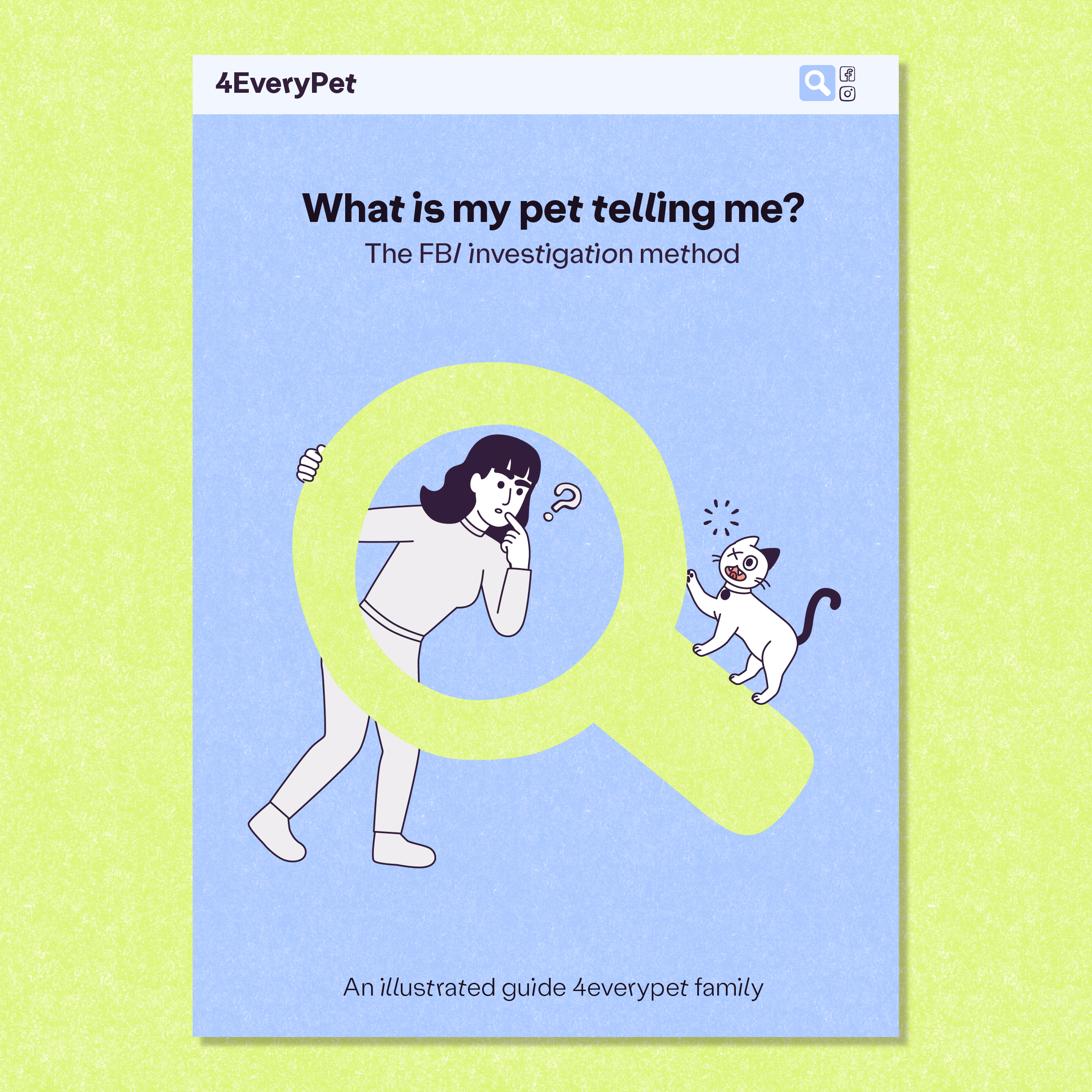Pets are part of our families, but we speak different languages. To help you, we created a pet language investigation method for you to understand your pet better.
For your investigation to create a successful translation and lead to many joyful interactions with your cat, we begin by gathering clues in your cat’s body language.
To dig deeper into the complete process of this investigation, check out our previous blog post on how to investigate pet body language.
Let's begin!
Look for the clues
Every clue is crucial and meaningful in studying the message your pet is sending you.
Cat tail dictionary
Learning about cat tail postures and movements
Your cat uses their tail for balance, protection, or communication depending on their position, shape, movements, and context. How your cat’s tail moves can give you a clue about how they feel. They are relaxed or interested in something if it moves slowly and smoothly from side to side. If the swishing speeds up, it can be a sign of irritability. If the tail is lashing, your cat is defensive.

Tail up with a curve at the tip
Your cat feels safe, relaxed, or playful.

Horizontal tail
Your cat can be relaxed, curious or neutral. You have to look at the context for more information.

Tail down
Your cat is trying to make them look smaller. It can happen in a stalking situation or if they feel fearful or defensive. If the tail is between their legs, your cat does not feel safe; they are afraid.

Raised and bristled tail
Your cat is trying to look bigger. They don't feel safe and are ready to defend themselves if needed.
Don't miss out on the opportunity to check our previous blog post to find more clues:
Cat Eye Dictionary
Cat Ear Dictionary
That’s it! Observe your cat's body language. After some time, most steps will come to you naturally. Keep an eye out for our next blog post. We´ll explore how your cat’s vocalizations can show how they feel.

Can't wait to explore the FBI Investigation Method?
You can now access the complete Method in the ebook. Start investigating today!
Thank you for reading!
4EveryPet can only exist thanks to your support. Please share this blog post or buy us a Ko-fi to help keep our content available 4everyone!





